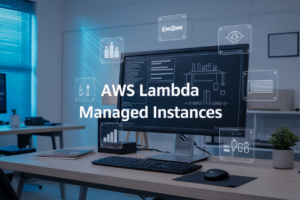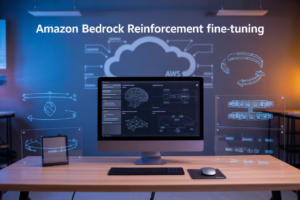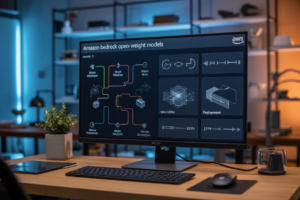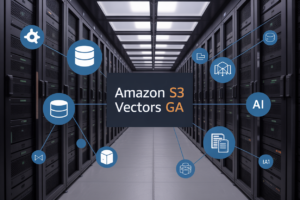Ever waited on hold with IT for 40 minutes while your cloud service was down, costing your company thousands in lost productivity? Yeah, that’s the nightmare AWS CloudWatch aims to prevent.
CloudWatch gives you real-time monitoring that spots issues before they become five-alarm fires. No more finding out about server crashes from angry customer tweets.
Think of it as having a 24/7 technical guardian that never sleeps, never takes coffee breaks, and alerts you the moment something looks off. And unlike that stack of monitoring tools you’ve been patching together, AWS CloudWatch delivers comprehensive visibility in one dashboard.
But here’s what most teams get wrong about CloudWatch – and it’s costing them big time…
Understanding AWS CloudWatch Fundamentals
A. What Is CloudWatch and Why It Matters
CloudWatch is AWS’s monitoring backbone that gives you x-ray vision into your entire cloud infrastructure. Think of it as your 24/7 operations teammate who never sleeps, constantly watching your resources, collecting data, and alerting you before small issues become major problems.
B. Key Components of the CloudWatch Ecosystem
The CloudWatch family has several powerful members working together:
- Metrics: Raw performance data from your resources
- Alarms: Your early warning system that triggers when thresholds are crossed
- Logs: Centralized log collection and analysis
- Events: Automated responses to changes in your environment
- Dashboards: Custom visual displays of your metrics
No more jumping between different tools or piecing together partial pictures of your system’s health.
C. How CloudWatch Differs from Other Monitoring Solutions
CloudWatch stands out from the monitoring crowd with its deep AWS integration. Unlike third-party solutions that bolt on from the outside, CloudWatch is baked right into the AWS ecosystem.
| Feature | CloudWatch | Generic Monitoring Tools |
|---|---|---|
| AWS Integration | Native, seamless | Requires configuration |
| Setup Effort | Minimal for AWS resources | Higher integration overhead |
| Cost Model | Pay for what you use | Often subscription-based |
| Metrics Retention | Automatic, configurable | May require separate storage |
This native integration means faster setup, more accurate data, and no complex API configurations.
D. Setting Up Your First CloudWatch Dashboard
Creating your first dashboard is surprisingly simple:
- Navigate to the CloudWatch console
- Click “Dashboards” in the left navigation
- Hit “Create dashboard” and give it a name
- Add widgets through the intuitive drag-and-drop interface
- Select your metrics and customize how they display
In minutes, you’ll have a visual command center showing exactly what matters for your applications.
Harnessing CloudWatch Metrics for Better Visibility
A. Standard vs. Custom Metrics: Choosing What to Monitor
AWS CloudWatch gives you two metric flavors – off-the-shelf or build-your-own. Standard metrics come ready to use – CPU usage, network traffic, the usual suspects. But custom metrics? That’s where the magic happens. Track your application’s specific heartbeat – order processing times, login attempts, whatever keeps you up at night.
Mastering CloudWatch Alarms for Proactive Monitoring
Mastering CloudWatch Alarms for Proactive Monitoring
A. Designing Effective Alarm Thresholds
Ever set up a CloudWatch alarm only to get bombarded with false alerts at 3 AM? Been there. The key is finding that sweet spot between being too sensitive and missing critical issues. Start with baseline metrics from normal operations, then add enough buffer to avoid those midnight wake-up calls while still catching real problems before they explode.
Leveraging CloudWatch Logs for Troubleshooting
Leveraging CloudWatch Logs for Troubleshooting
A. Centralizing Application and System Logs
Ever tried finding a needle in a haystack? That’s what debugging feels like without centralized logs. CloudWatch Logs gives you one place for all your application mess. No more server-hopping or log-hunting – just filter, search, and solve problems fast. The time you’ll save is worth every penny.
Advanced CloudWatch Techniques for DevOps Teams
Advanced CloudWatch Techniques for DevOps Teams
A. Implementing Synthetic Monitoring for User Experience
Ever tried guessing what your users experience when nobody’s watching? Stop guessing. Synthetic monitoring lets you create canaries—scripts that mimic user actions 24/7—catching performance issues before real users do. Set them up for critical pathways and sleep better at night.
AWS CloudWatch is truly an indispensable tool in the AWS ecosystem, offering a comprehensive solution for monitoring your cloud resources in real-time. From the fundamental metrics that provide visibility into your application’s performance to the proactive alarm systems that alert you before small issues become major problems, CloudWatch equips you with everything needed to maintain optimal operations. The integration of logs for effective troubleshooting further strengthens your ability to quickly identify and resolve issues.
As you implement CloudWatch in your environment, remember that mastering its advanced features will significantly enhance your DevOps capabilities. Start with the basics, gradually incorporate alarms and logs into your monitoring strategy, and then explore the more sophisticated techniques as your comfort level increases. Your cloud infrastructure deserves nothing less than the vigilant oversight that CloudWatch provides – implement it today and experience the confidence that comes with knowing your AWS resources are under constant, intelligent supervision.



















